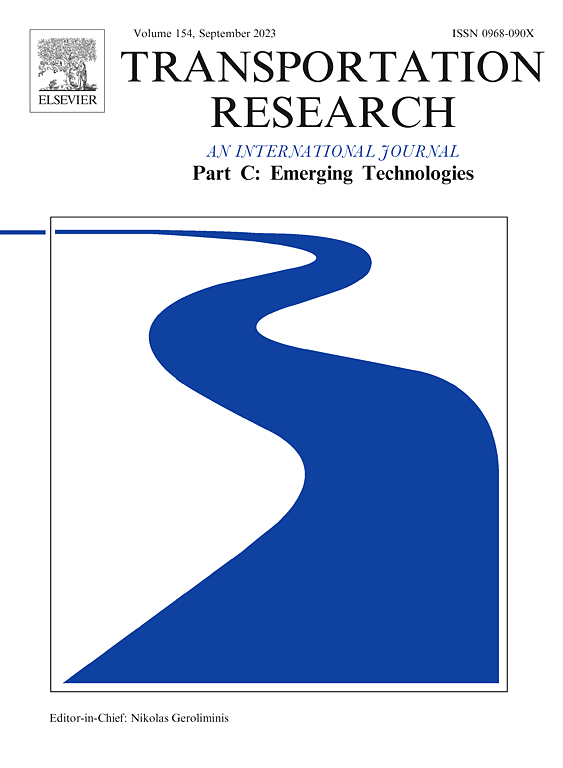Mitigating cascading effects of vehicle lane changes: A hyperedge game approach
IF 7.6
1区 工程技术
Q1 TRANSPORTATION SCIENCE & TECHNOLOGY
Transportation Research Part C-Emerging Technologies
Pub Date : 2025-02-01
DOI:10.1016/j.trc.2024.104971
引用次数: 0
Abstract
The lane-changing behavior of Connected and Automated vehicles (CAVs) exemplifies a collective interoperability phenomenon in which the lane change of a target vehicle prompts collaborative responses from neighboring vehicles, resulting in traffic oscillations throughout the transportation network, commonly referred to as cascading effects. To accurately characterize and mitigate these cascading effects during the collaborative lane-changing process of CAVs, we propose an Intentional Hyperedge Game Model (IHGM) grounded in hypergraph theory. The model consists of three critical modes: gap sorting, the intention boundary, and the hyperedge game. First, gap sorting prioritizes the order of gap selection for the target vehicle by assessing the benefits. Second, the intention boundary delineates the safety constraints associated with lane changes, integrating the lane change intentions of the target vehicle with the driving statuses of neighboring vehicles. Finally, the hyperedge game effectively simulates the cascading effects generated by CAVs throughout the lane-changing process. The traffic flow data of Beijing’s Second Ring Road, which were collected in 2019 for a period of seven days, were used as inputs in our case study. The results show that the IHGM significantly reduces the cascading effects and improves the lane-changing success rate by approximately 10 % in high-density scenarios, ensuring safety and comfort. The lane-changing success rate is related to the Lane-changing Position (LP), which is the distance between the target vehicle and the no lane-changing area. When the LP is 50 m, the probability of identifying a feasible path for the target vehicle exceeds 30 %, and the lane-changing success rate is 100 % when there is a feasible path. Furthermore, when the first three lane-changing target gaps are evaluated, the model effectively solves more than 92 % of the actual lane-changing scenarios and greatly reduces the impact of cascading effects. The model meets the lane-changing requirements in 98 % of the cases in which the first four gaps are evaluated.
求助全文
约1分钟内获得全文
求助全文
来源期刊
CiteScore
15.80
自引率
12.00%
发文量
332
审稿时长
64 days
期刊介绍:
Transportation Research: Part C (TR_C) is dedicated to showcasing high-quality, scholarly research that delves into the development, applications, and implications of transportation systems and emerging technologies. Our focus lies not solely on individual technologies, but rather on their broader implications for the planning, design, operation, control, maintenance, and rehabilitation of transportation systems, services, and components. In essence, the intellectual core of the journal revolves around the transportation aspect rather than the technology itself. We actively encourage the integration of quantitative methods from diverse fields such as operations research, control systems, complex networks, computer science, and artificial intelligence. Join us in exploring the intersection of transportation systems and emerging technologies to drive innovation and progress in the field.

 求助内容:
求助内容: 应助结果提醒方式:
应助结果提醒方式:


